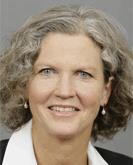How might changes at the U.S. EPA, including avoiding/removing certain language such as "climate change" in official documents, affect the progress of environmental initiatives?
 A: Censoring language around climate change doesn’t change the fact of climate change. While the EPA puts a hold on programs, and it’s staff experts retire or find jobs elsewhere, states, municipalities, and NGOs scurry to fill the gaps. But they can only do so much. The gaps at EPA are leaving the agency flat-footed in the face of assaults to water from climate change and more (lead contamination, toxic algae blooms, agricultural chemical contamination) that end up costing our communities in the long run. The other big loser, however, is American technology and innovation. In the face of inconsistent messages and regulations from the EPA, it’s hard for new technologies and practices that can bring both economic and public health/environmental gains to get past the lab bench. I fear that the current approach at the EPA is short-sighted and will leave us in a position of playing catch-up with the rest of the world once the political winds change.
A: Censoring language around climate change doesn’t change the fact of climate change. While the EPA puts a hold on programs, and it’s staff experts retire or find jobs elsewhere, states, municipalities, and NGOs scurry to fill the gaps. But they can only do so much. The gaps at EPA are leaving the agency flat-footed in the face of assaults to water from climate change and more (lead contamination, toxic algae blooms, agricultural chemical contamination) that end up costing our communities in the long run. The other big loser, however, is American technology and innovation. In the face of inconsistent messages and regulations from the EPA, it’s hard for new technologies and practices that can bring both economic and public health/environmental gains to get past the lab bench. I fear that the current approach at the EPA is short-sighted and will leave us in a position of playing catch-up with the rest of the world once the political winds change.
Lynn E. Broaddus, PhD, MBA
Lynn Broaddus, president of Broadview Collaborative, Inc., made a decision early on to focus on natural resource sustainability. Her career includes work in energy conservation and efficiency, biodiversity, land conservation, water resources, and education. These experiences are underpinned by scientific rigor and a tireless belief that good people working together can make big differences.
 A: The avoidance or removal of “climate change” verbiage from U.S. EPA documents may just be the first step with many trickle-down side effects that could not only hamper environmental progress on alternative energy projects, but also on resiliency projects. The EPA has tools such as the Climate Resiliency Evaluation and Awareness Tool (CREAT) which prompts utilities to look at alternatives with consideration to the effects from climate change when gauging risks. With the increased frequency and severity of storms, these types of resources are valuable in helping utilities better plan for infrastructure upgrades by considering all threats such as the effects of climate change. While it is difficult to predict the political effects on federal funding for such programs, the increased response and recovery spending continues to support the case for improved resiliency planning.
A: The avoidance or removal of “climate change” verbiage from U.S. EPA documents may just be the first step with many trickle-down side effects that could not only hamper environmental progress on alternative energy projects, but also on resiliency projects. The EPA has tools such as the Climate Resiliency Evaluation and Awareness Tool (CREAT) which prompts utilities to look at alternatives with consideration to the effects from climate change when gauging risks. With the increased frequency and severity of storms, these types of resources are valuable in helping utilities better plan for infrastructure upgrades by considering all threats such as the effects of climate change. While it is difficult to predict the political effects on federal funding for such programs, the increased response and recovery spending continues to support the case for improved resiliency planning.
Christine Ballard
Christine Ballard, PE, is a Vice President and Water Resources Practice Leader at T&M Associates, based in T&M’s Middletown, NJ office. Christine has proven herself a key player and leader not only at T&M, but in the expansive engineering field as well.
